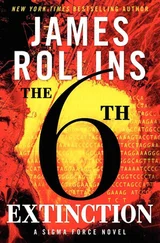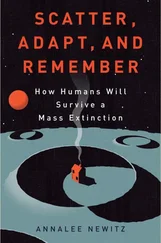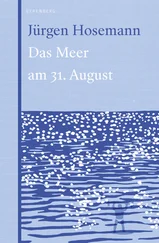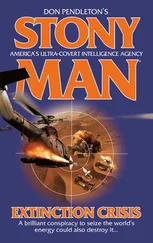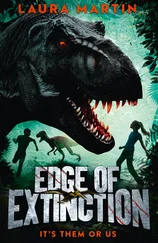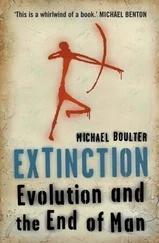“I have to tell my friends about this. They’ll help us solve it.”
He frowns and shakes his head. “Absolutely not! You can’t do that. We have to keep it confidential or we’ll be in big trouble. Do you understand? This is the CIA we’re dealing with.”
“Okay, fine.” She stares at the screen. “What does it mean? Johnny B. Goode?”
“I don’t know.” He taps his fingers and contemplates. “Is there evidence of life near that star?”
“Funny, I wrote a paper about Barnard’s in college. Let me load it.” She accesses her cloud. “I found it. Here it is:
“At 7-12 billion years of age, Barnard’s Star is among the oldest stars in the Milky Way Galaxy, considerably older than our 4.5 billion-year-old sun. Solar flares indicate that it is still active despite its old age. It is the fourth nearest star to our planet…”
She scans her document looking for useful information. “Barnard’s Star weighs one-tenth the mass of the sun… periodic changes to its brightness indicate it rotates once every 130 days.” She pauses as she reads the next line. “Perturbations in its proper motion suggests that it may be orbited by small terrestrial planets.”
Anil jolts upright. “Planets?”
She looks at him and then continues. “In 1973, Alan Bond proposed Project Daedalus, a mission to construct an unmanned interstellar spacecraft to reach the star. Fueled by a nuclear rocket, the craft would reach it in fifty years’ time.”
Anil rubs his chin. “There must be an advanced species there. And it’s so close to Earth!”
“They want to tell us something.”
“But what? Why did they send us an old rock song?”
“The more important question is how did they get a hold of it? They must have had contact with our civilization in the past.”
Anil replays the decrypted message. “Go, go, Go Johnny Go, Go, Go, Johnny, Go, Go, Go, Johnny B. Goode.”
“When was the track made?” she asks.
He runs a web search and reads the result aloud. “’Johnny B. Goode’ is a 1958 rock-and-roll song written and recorded by Chuck Berry. It was ranked seventh on Rolling Stone’s list of 500 Greatest Songs of All Time.”
Prisha stares in thought. “Who’s Chuck Berry?”
Anil runs another query. “Chuck Berry was an American singer, songwriter, and one of the pioneers of rock and roll music. He was among the first musicians to be inducted into the Rock and Roll Hall of Fame.”
“Give me the laptop.” She logs back onto JPL and stares at Barnard’s Star in the space viewer. “Somehow this song from 1958 made its way out into the Milky Way, but how?”
“Try searching for ‘Johnny B. Goode AND Milky Way.’”
She queries the terms and her eyes widen when she scans the top search result. “Oh my God, check this out—Chuck Berry Immortalized on Voyager Space Mission.” She opens the article dated March 20, 2017, and her chin drops. “Chuck Berry, the father of rock and roll, passed from this world on Saturday at 90 years old, but thanks to NASA, his music lives on in space. A recording of Chuck Berry’s ‘Johnny B. Goode’ was included on a golden disc sent to space with the Voyager mission.”
Anil laughs. “You’re kidding me. What’s Voyager?”
“You don’t remember from grade school? In the 1970s, NASA launched two spacecraft to explore the solar system—Voyager 1 and 2. A couple years after launch, Voyager 1 flew by Jupiter and photographed the Great Red Spot for the first time. It discovered volcanic activity on its moon Io and active geology on Europa. Then it flew by Saturn and discovered the atomic composition of its rings. It detected an atmosphere on Saturn’s largest moon, Titan.”
“It accomplished all of that on its own?”
“Yes.”
Anil takes the laptop and runs a search. “In 2013, Voyager 1 left the solar system and entered interstellar space at a velocity of 38,000 miles per hour.” He looks up at her. “That means it’s still flying out there. Where is it now?”
She nods. “Let’s figure that out. We can determine its location in the galaxy based on its velocity and time of launch.” She opens a calculator and runs the math. “Based on my calculations, Voyager 1 is 30 billion miles from Earth.”
“And how far is Barnard’s?”
“Well, it’s six light-years away. Each light year is six trillion miles, which makes it 36 trillion miles from us.”
Anil leans back. “So Voyager 1 is nowhere near that star?”
“Nope.”
They stare at each other for a few minutes, not sure what to do next. Prisha logs back onto JPL and browses dozens of sources, looking for information on Barnard’s Star. She tracks a link to the Keck Telescope on the Mauna Kea Observatory in Hawaii, one of the darkest environments in the world. She scans the Atacama Large Millimeter Array, a cluster of 66 radio telescopes in Chile. A futile hour of searching passes.
“I give up,” she says to him. “I’m tired. We can work on this later.”
As she puts away the laptop, Anil grabs her arm. “Wait a minute. Aren’t there transmissions coming from Voyager 1?”
Her eyes narrow. “Yes. It’s been communicating with Earth since 1977.”
“What was the last signal?”
“More importantly, when was the last one?” She searches for the “Deep Space Network” and opens its portal, reading its welcome page aloud. “The DSN is a worldwide network of US spacecraft transmissions that supports NASA’s interplanetary missions.”
“There’s a website for that?” Anil asks. “What do you see?”
She logs in with her JPL login. “Look at this. Here’s a list of all American space probes, the last one from 2042. Wow, here’s Voyager 1…”
Anil leans over and stares. A link takes them to a photograph of Voyager 1 from 1977. He studies the spacecraft’s design—a 12-foot circular radio antenna with tripod legs and gold-plated instruments peeking from its apex. “It looks so basic.”
“What do you expect? They were primitive back then.”
“When was its last communication?”
She clicks on “raw data” and sifts through a list of files. “It looks like the last contact was in 2060, just a routine signal.”
“That was six years ago!”
They stare at each other. Prisha runs her fingers through her hair. “So let me get this straight. Voyager 1 is flying through space with a record album containing ‘Johnny B. Goode .’ The last time it communicated with us was six years ago. Now the song is being sent from Barnard’s Star six light-years away?”
Anil locks eyes with her. “You think there’s a connection?”
“Maybe someone found Voyager 1.”
“Intelligent beings?”
They sit silently.
Prisha gestures. “There must be an advanced civilization near Barnard’s Star. Are they trying to contact us?”
“What if six years ago, an extraterrestrial species discovered Voyager 1 and its golden disc. They cast a message to us and it’s taken six years for that signal to arrive here on Earth.”
“But why?”
He rubs his temples in frustration. The answers do not arrive. He goes back and streams the live transmission from Barnard’s Star. “Go, go, Go Johnny Go, Go, Go, Johnny, Go, Go, Go, Johnny B. Goode.” The track repeats on a loop every ninety seconds.
Prisha rubs her belly. “If someone out there discovered the golden disc, why did they pick this song? And why is it repeating?”
“Maybe it’s an acknowledgment that they found Voyager 1?”
“That’s a strange thing to send across the galaxy.”
“You think there’s more to the message?”
Prisha nods. “Yes. There has to be.”
Anil’s eyes widen. “Maybe they embedded something in the song?”
Читать дальше

